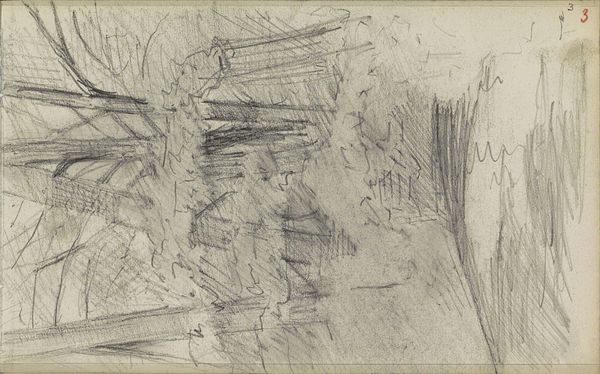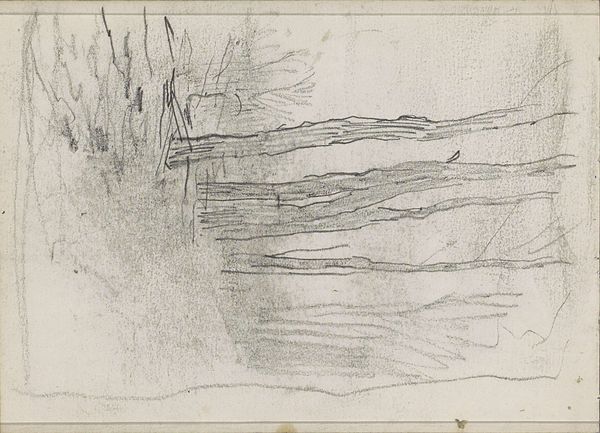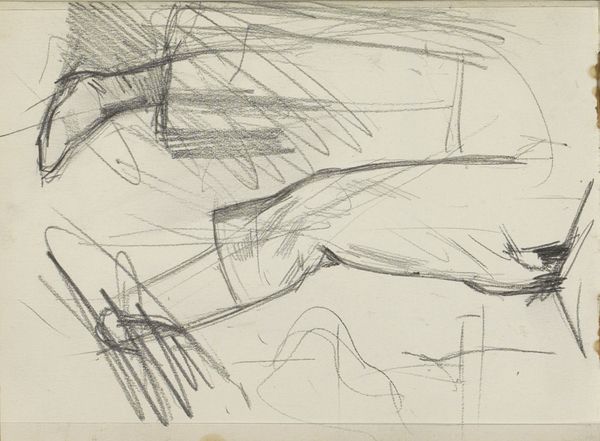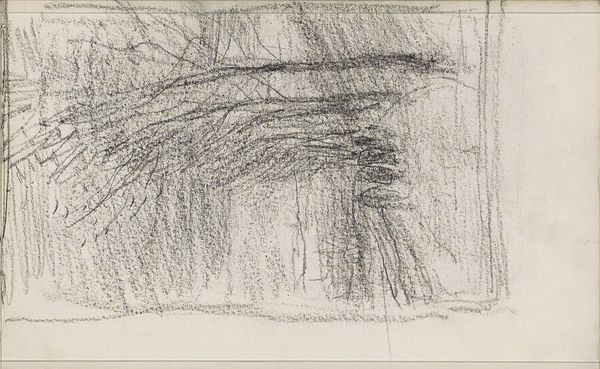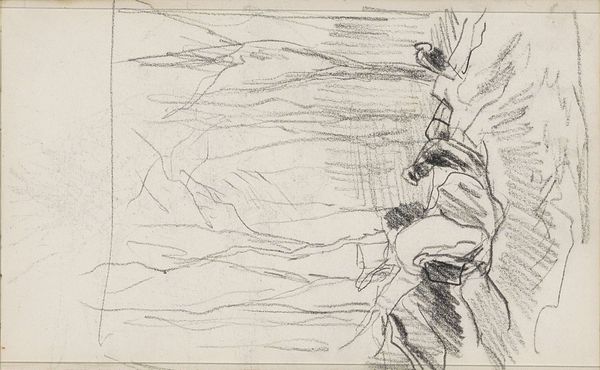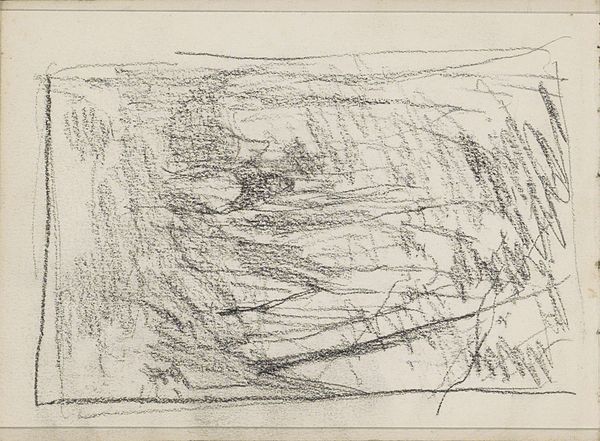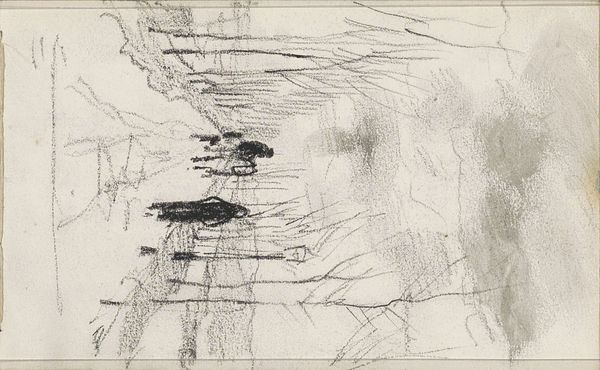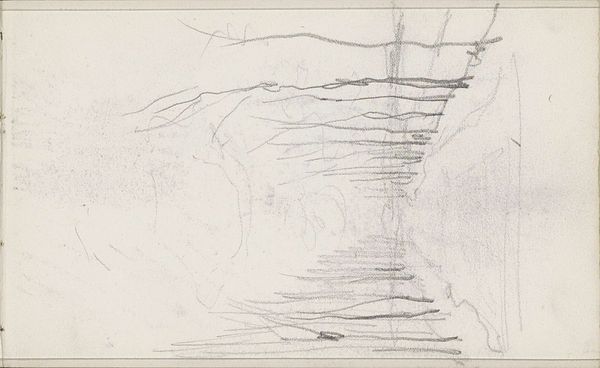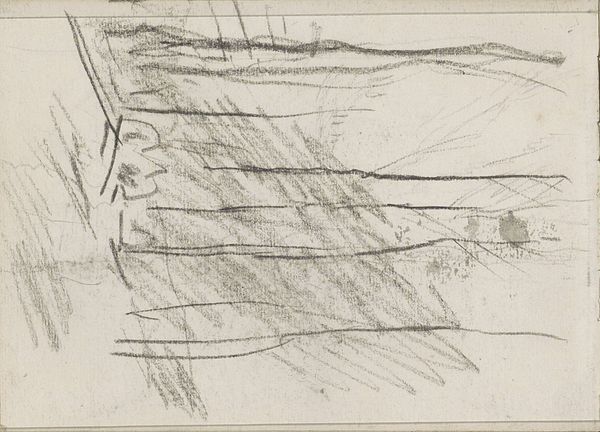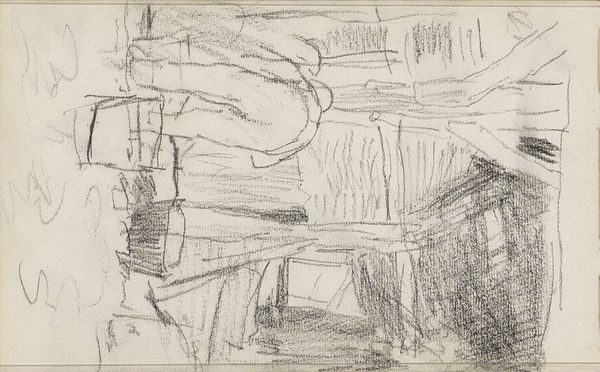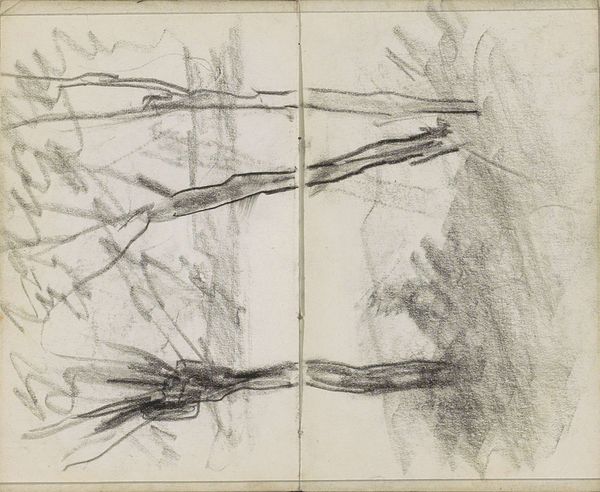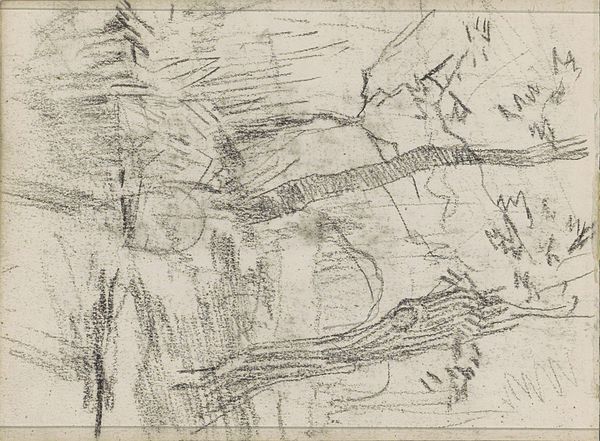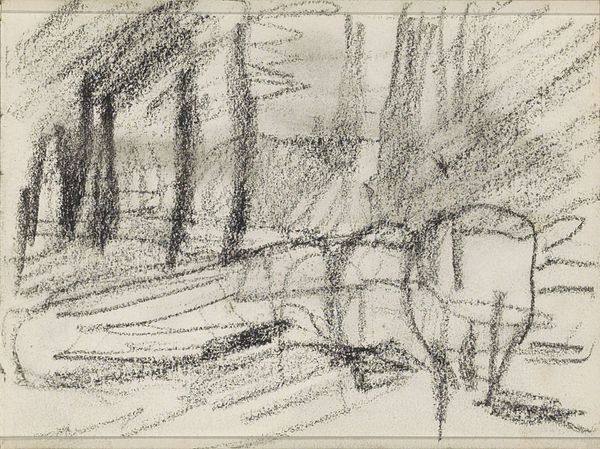
drawing, pencil
#
drawing
#
pen sketch
#
landscape
#
forest
#
pencil
#
line
#
sketchbook drawing
#
realism
Copyright: Rijks Museum: Open Domain
Editor: So, here we have "Hek bij een bosrand" – "Fence at a Forest Edge" – by Anton Mauve, created sometime between 1848 and 1888. It’s a drawing done in pencil and pen. The energy of the sketch feels raw and immediate. What do you make of this, from your perspective? Curator: This sketch presents an interesting lens through which to view the changing relationship between humans and the natural world during that period. The fence acts as a potent symbol of land ownership and the increasing division of nature, wouldn't you agree? Editor: That’s a really interesting angle. I was so focused on the immediate impression, the almost chaotic lines, that I missed the statement it makes about ownership. How would this work have been perceived by the public at the time? Curator: Mauve's contemporaries would have been keenly aware of the societal shifts, namely industrialisation. So I think they might see the fence not just as a practical enclosure but as an assertion of control over the landscape itself. Did such "control" offer tangible benefits to everyone? Or were there new sets of problems created by that kind of land use and ownership? Editor: It certainly prompts you to think about those broader questions. What about the placement of this work within Mauve’s career? How might his artistic trajectory shape the meaning of this sketch? Curator: Mauve was a significant figure within the Hague School, a movement rooted in Realism. He was invested in portraying rural life. Understanding that historical context really adds depth. What artistic choices, beyond just subject matter, seem to emphasize or comment on these changing times? Editor: Looking again, the starkness of the line work, the lack of romantic idealization… It really does point to a more critical perspective on the landscape. I hadn't really thought about the social context before! Curator: Exactly. That is the role of museums and other public spaces – we shape perspectives on works that may or may not fit dominant narratives, right? Editor: It’s like the drawing is prompting a conversation about those relationships. Thank you for helping me to view this landscape drawing through such a rich, historical lens!
Comments
No comments
Be the first to comment and join the conversation on the ultimate creative platform.
